I have in previous entries (July 2012 and July 2013) written about a peer mediation initiative called the Peacemakers Conference. The purpose of the Peacemakers Conference is to teach 13-16 year olds how to resolve conflicts amicably in a workshop cum competition format. This year’s Peacemakers Conference was held from 20 to 22 July 2020.
This year was unusual in that, because of COVID-19, the Peacemakers Conference was run entirely online. While this created its own stresses and uncertainties, it also gave us the opportunity to make the programme available to a much larger number of participants, 300 in total. It also allowed us to benefit from the coaching of mediators from the Singapore International Mediation Institute (SIMI), not just from Singapore, but from around the globe.
As in previous years, we asked students from different schools to work together to create a visual metaphor for mediation. This started in 2015 and has become a regular feature in the Peacemakers Conference. Metaphors from previous years be found in the entries for November 2015, August 2016, July 2017, July 2018 and July 2019.
This year, the students came up with 16 visual metaphors which I would like to share with readers in this entry. For each of these, an image of the students presenting the metaphor is shared along with their description of the metaphor.
I would like to acknowledge the efforts of Mr. Samuel Teo, Mr. Sean Lim and the Peacemakers Facilitation team for capturing the the description and images of each of the metaphors that appear below.
1. Mediation is like an Egg Whisk
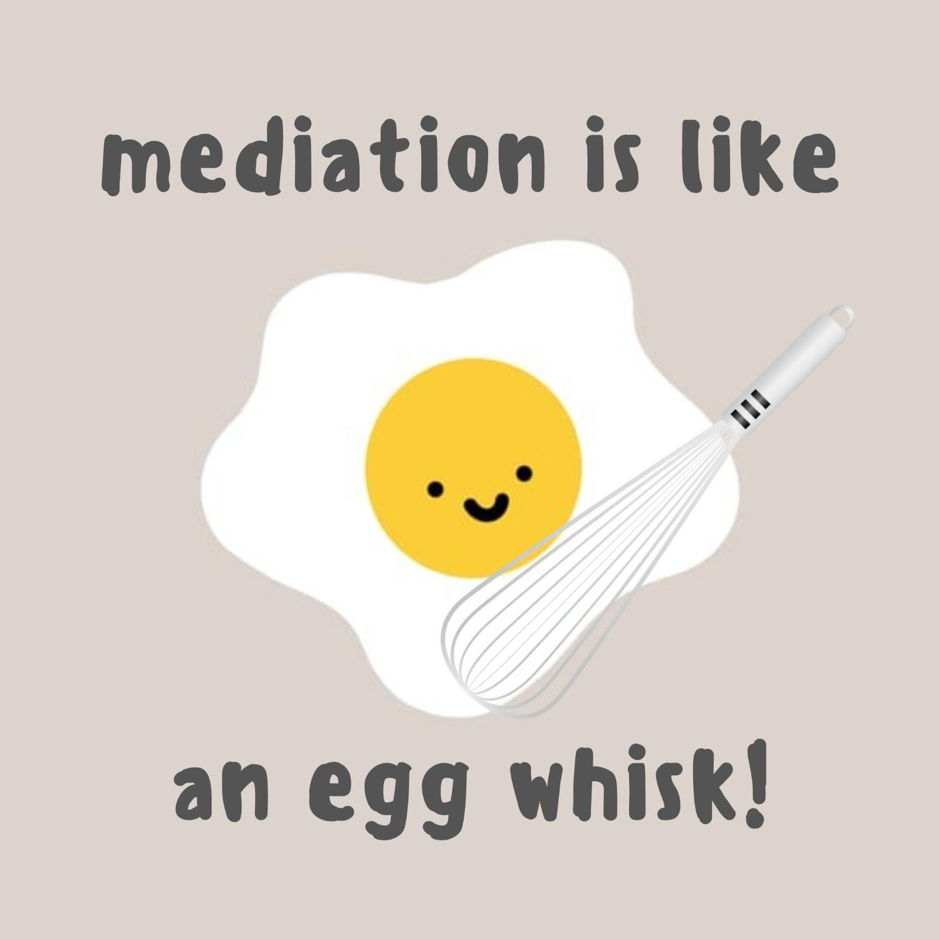
Mediation is like an egg whisk!
The egg white and the egg yolk are two different things.
But when you whisk the egg, you are combining these two different things into one!
In the same way, each party has their own interests, so it is the job of the mediator to combine them and let the parties come up with a compromise.
The harder you whisk the egg, the silkier the egg becomes – synonymous to how the mediator should ask more open-ended questions to get to know the full story better, allowing for the parties to come up with a more effective solution. However, once you whisk the egg a tad bit too hard, you will make a mess. Continuing the metaphor, if the mediator does too much and comes up with their own solution for the parties, a mess could be made :O
That is why mediation is like an egg whisk.
2. Mediation is a Bridge
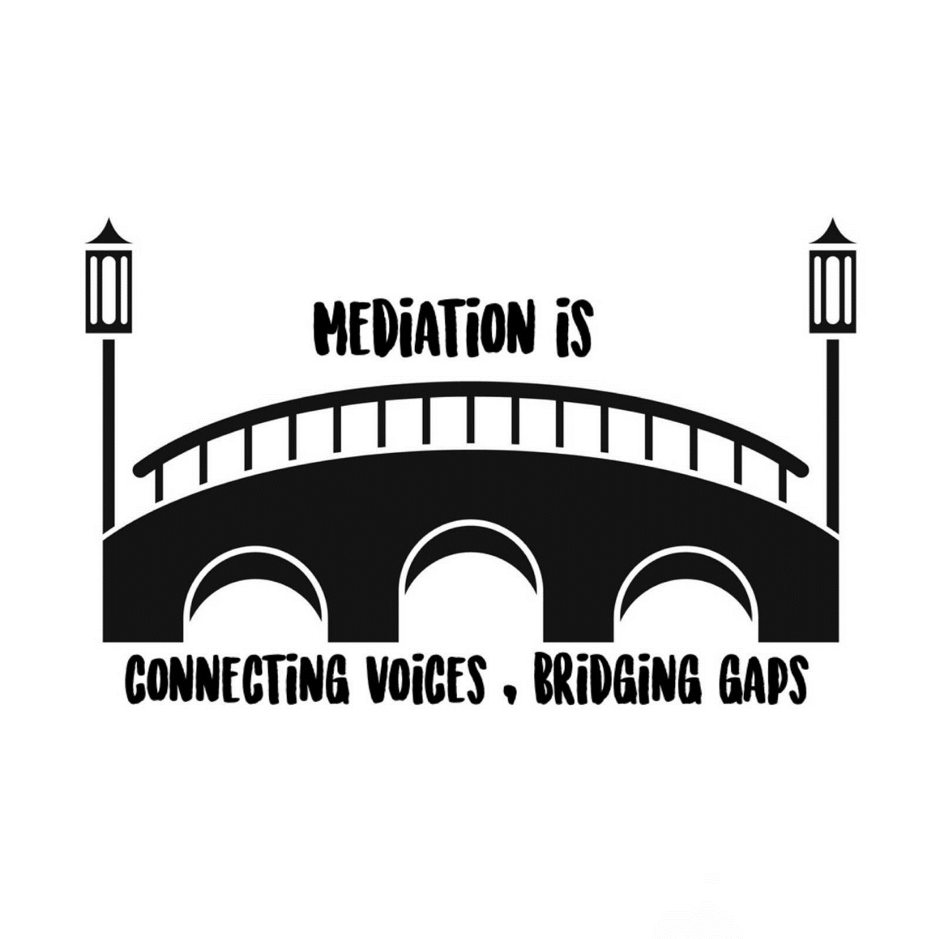
The process of mediation is like a bridge, it allow two people to connect together and work things out (just like how a bridge is built after 2 cities agree to build it and it connects between the 2 cities). After mediation, the gap that was formed during the conflict would be bridged and the conflict may be resolved.
3. Mediation is a Rubik’s Cube
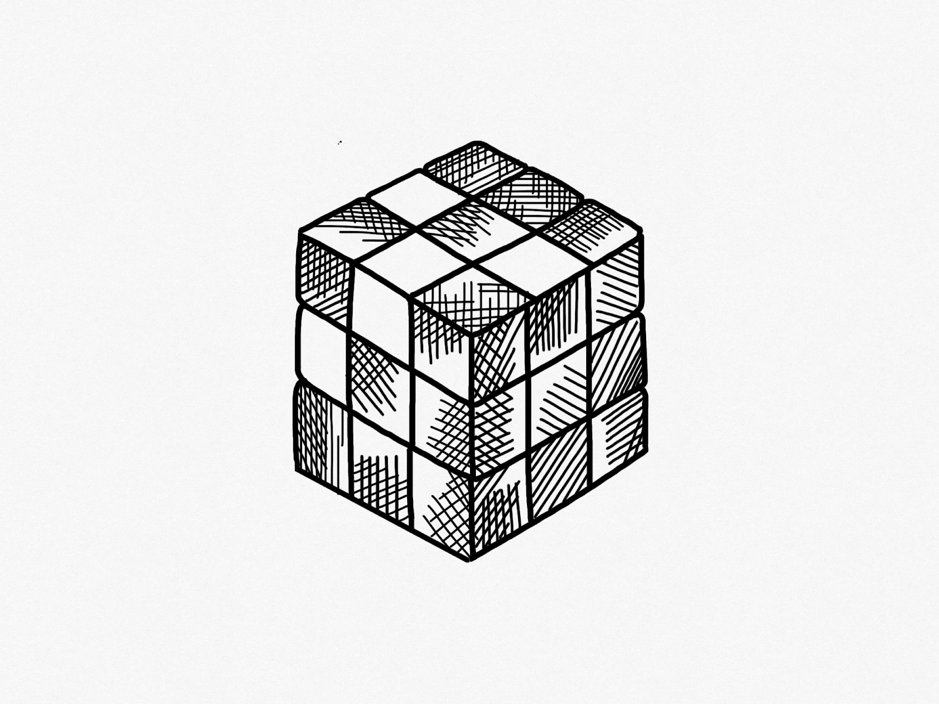
Our group chose a rubik’s cube because we feel that a rubik’s cube requires us to consider the different sides to solve it. In the context of mediation, it represents the different perspectives we have to take into account of, when mediating a problem. There are stages to take when solving the cube which signifies the structured approach to resolve a conflict.
Furthermore, you may be overwhelmed with emotions — be it experiencing a range of feelings and thoughts. This is when we acknowledge our feelings! For instance, we feel frustrated since the rubik’s cube, or the problem, is difficult and hard to solve, stressed out when knowing that the methods do not work. Thus, we have to take a step back, take a break to calm down our emotions.
When you take a step back, you’ll be thinking out of the box like, what should I do to make it all red on one side? Or Is there another way that I can prevent myself from using the wrong method?
This helps us to think of multiple solutions to solve the cube, while providing us a sense of accomplishment as it challenges us. Ultimately, we’ll be happy and relieved when we know that the cube is solved, just like in mediation!
4. Mediation is like Magnets that repel but when in the right place attract
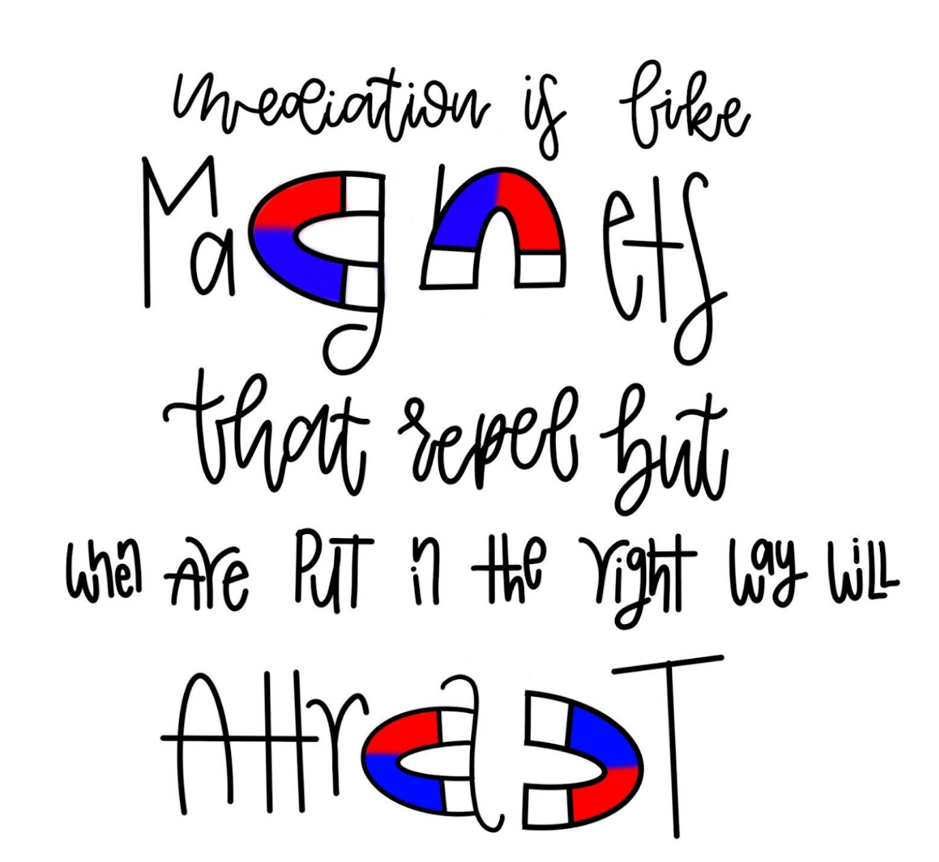
When two different people with two opposing mindsets come together, they would repel like magnets facing the like poles. But when a mediator steps in, they start to come to an understanding and think alike, they turn around and attract.
5. Mediation is the Bridge over Troubled Waters
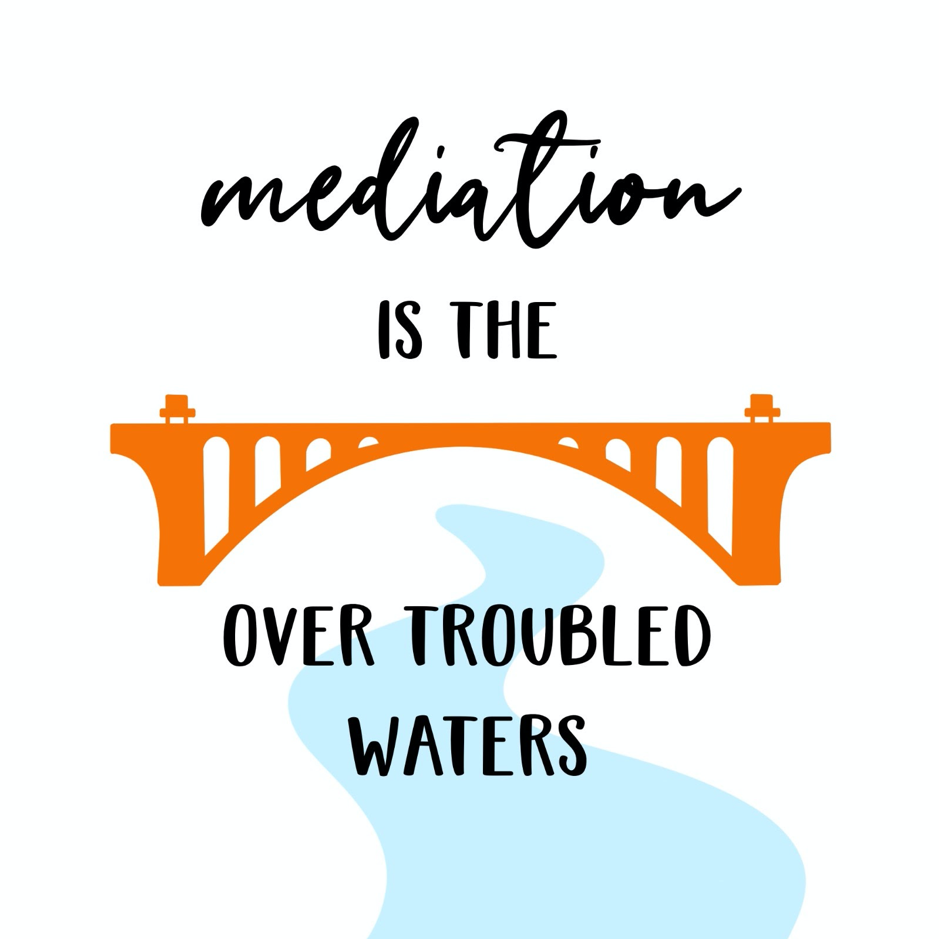
We decided on the metaphor “Mediation is a bridge over troubled waters” because a mediator’s role is to connect both party’s views. This helps each party to step into the other’s shoes to see from their perspective, like people crossing a “bridge” to get to the other side, or a place where they are safe from the turbulent current that is their emotions (i.e: troubled waters). Once the parties reach the other side of the bridge (see from the other’s perspective) they can think rationally and make decisions without any prejudice as understanding each other without their conflicting emotions would make it easier for them to think clearly and come to an amiable conclusion.
6. Mediation is like Autumn
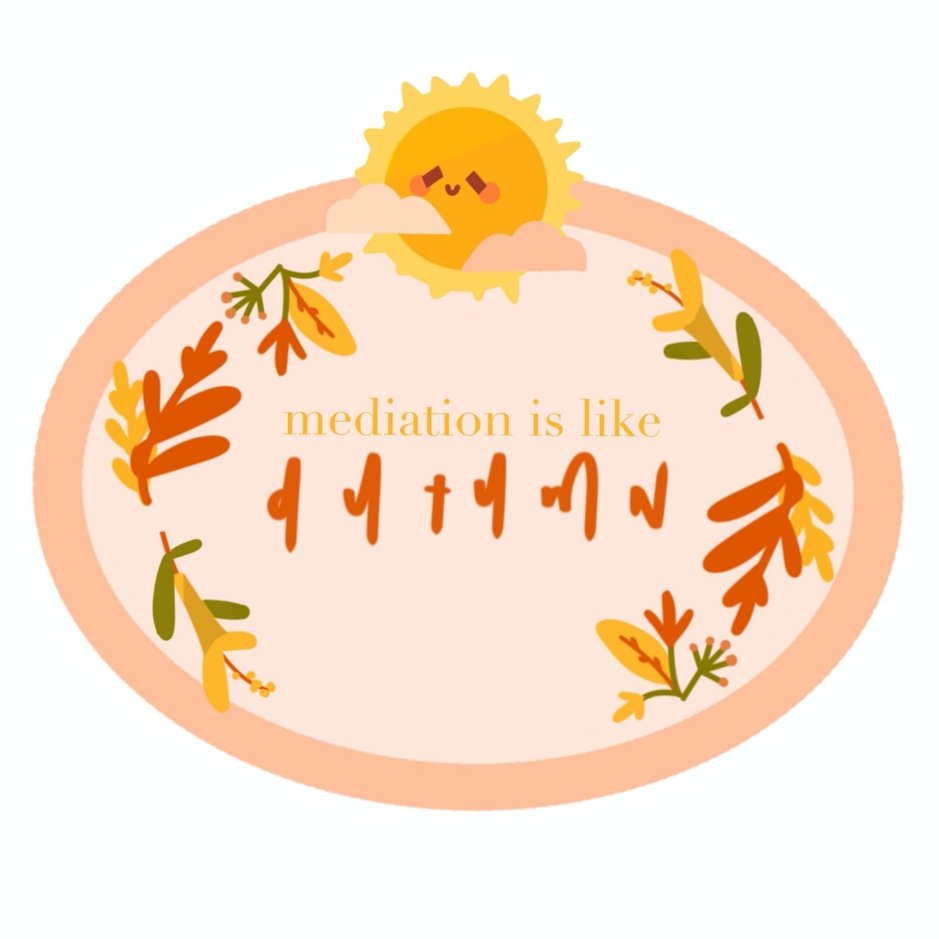
It is the bridge between summer and winter, like how it is the connection between two opposing parties. Being the season of harvest, it also reaps bountiful produce, like the bountiful results of mediation, with a comfortable and peaceful atmosphere devoid of the droughts of impulse and the blizzard of violence. The mixing of different leaf colours, red, yellow, green, too symbolise the mix of various emotions that come up, and all equally fall down to the carpet of serene foliage below.
7. Mediation is like a pH scale
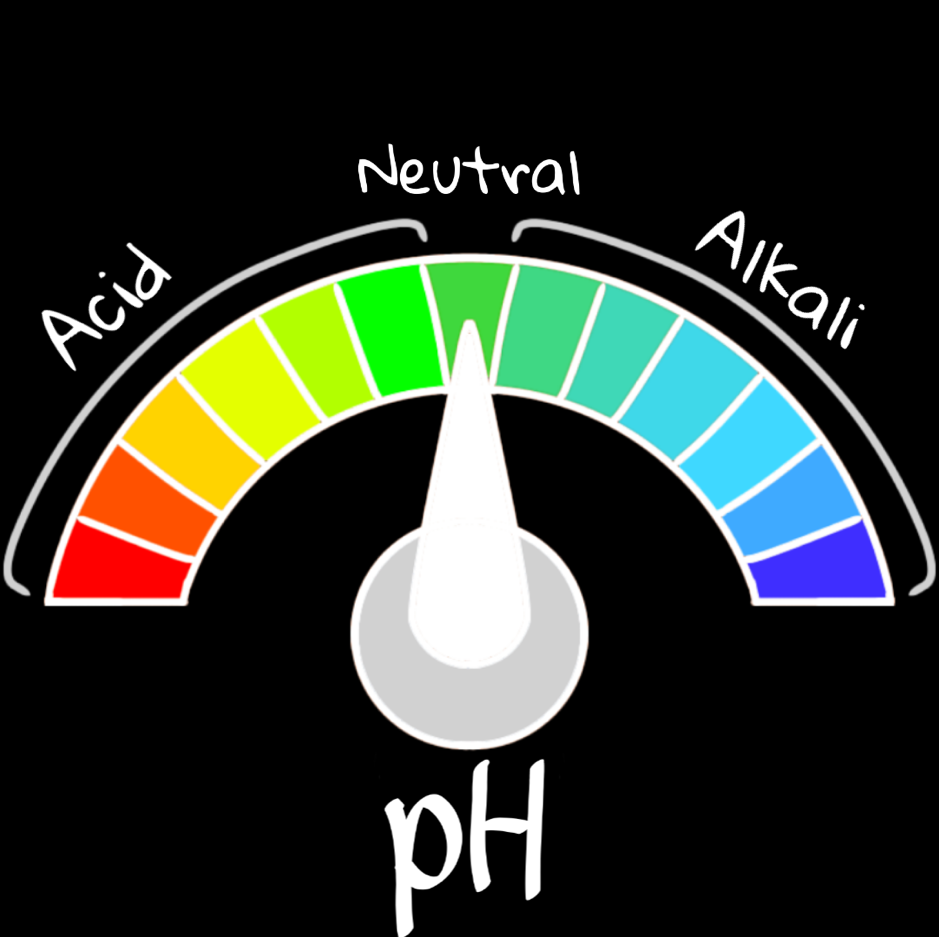
A Mediator is like a pH scale.
A Mediator is someone who aims to get both opposing parties together and help them understand each other better, resolving misunderstandings.
Likewise, the alkali must meet the acid in order to neutralise and become stable.
8. Mediation is like Penguins
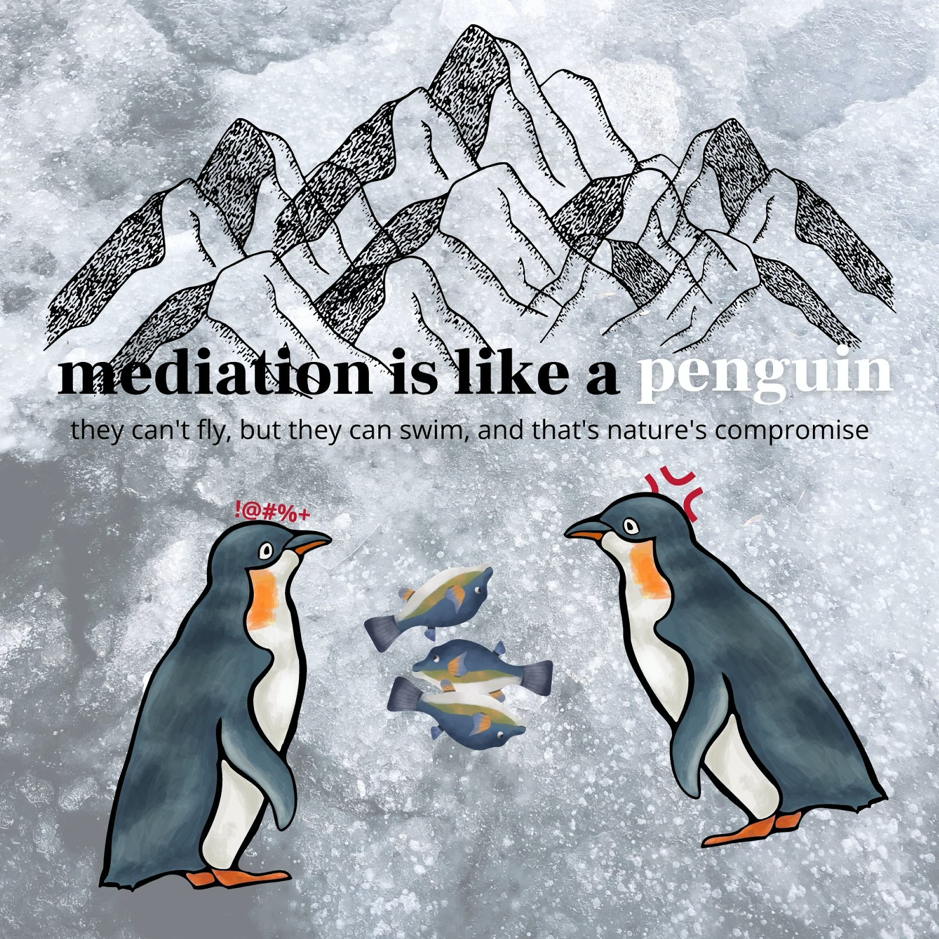
Story: One day, a new animal was to be created, in this new animal, both colours wanted to be different kinds of animals. On one hand, the black colour, remembers its time as a black betta fish. It thought, “How beautiful! I want to be a fish again and swim in the waters! On the other hand, the white colour remembered its time as a dove. It thought, “How graceful! I want to be a bird again and travel at high speeds!” However, the two colours could not decide on what type of animal they wanted to become, and so they fought and fought.
One day, a mediator came into the picture. The creator decided that the fighting was unhealthy and decided to end this conflict once and for all, so the creator invited the two colours to a mediation session to which they both agreed. During the mediation session, both colours shared their interests and positions, after the sharing, they better understood one another and came to a compromise. They decided to create a special animal, a beautiful bird which would swim gracefully at high speeds. Behold, the penguin was born!
Explanation: In mediation, there are two parties who come together with a mediator to allow the parties to resolve an argument and arrive at a solution. In the case of the penguin, the black and white colours represent the two parties, coming together into a singular body in agreement. The black colour wanted to be a fish and swim just like it had done when it created the betta fish. However, the white wanted to be a bird and travel quickly and gracefully like it had done as a dove. The polar opposite animals were too different, and they couldn’t come to an agreement. However, through mediation, they thought creatively and created a new and special animal – The penguin! As a penguin, black got to swim in the waters and white got to move quickly and gracefully, hence resolving the argument.
9. Mediation is like a Diamond
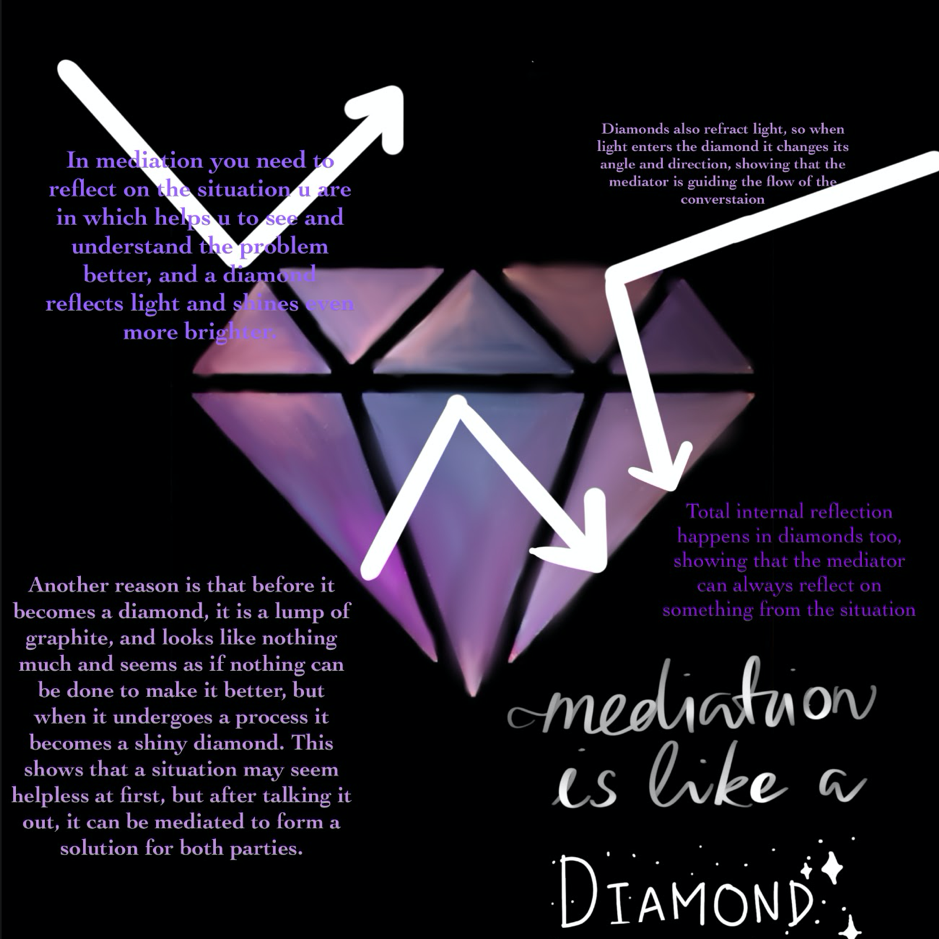
In mediation, you need to reflect on the situation you are in which helps you to see and understand the problem better, and a diamond reflects light and shines even more brighter. Another reason can be that before it becomes a diamond, it is a lump of graphite, and it looks like nothing much and seems as if nothing can be done to make it look better, but when it undergoes a process then it becomes a shiny diamond. This can show that the problem you are facing may seem like it cannot be helped at first, but after talking it out then it can be mediated and everyone will be happy. A diamond also refracts light, so like when light enters the diamond it changes its angle and changes direction, so it’s like the diamond (mediator) is guiding the light (thoughts/conversation of the disputants)
Summary: A diamond is extremely precious yet fragile, a diamond has a lot of reflections that can represent different perspectives just like how a mediator sees different points of views.
10. Mediation is Key
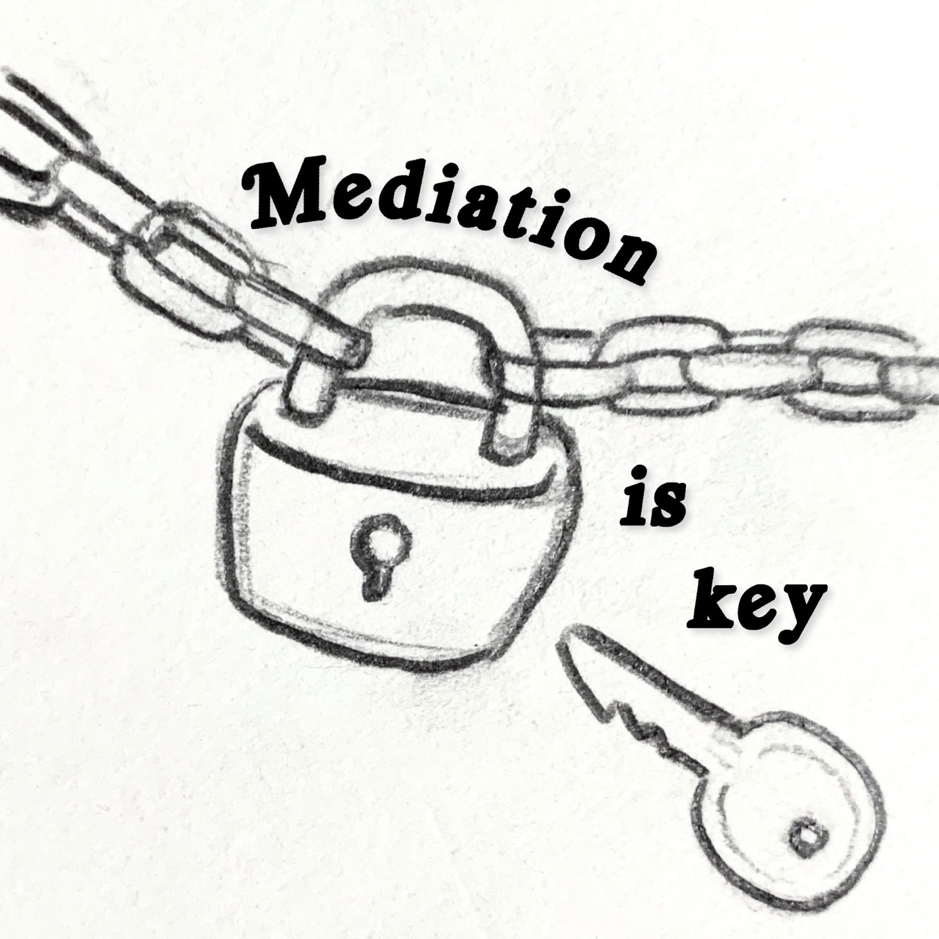
The key is mediation while the two chains connected are the two conflicting parties. The lock is the conflict. The aim of mediation is to facilitate a discussion and help both parties understand each other. Thus, unlocking “peace “ between both parties.
11. Mediation is like Polishing a Diamond
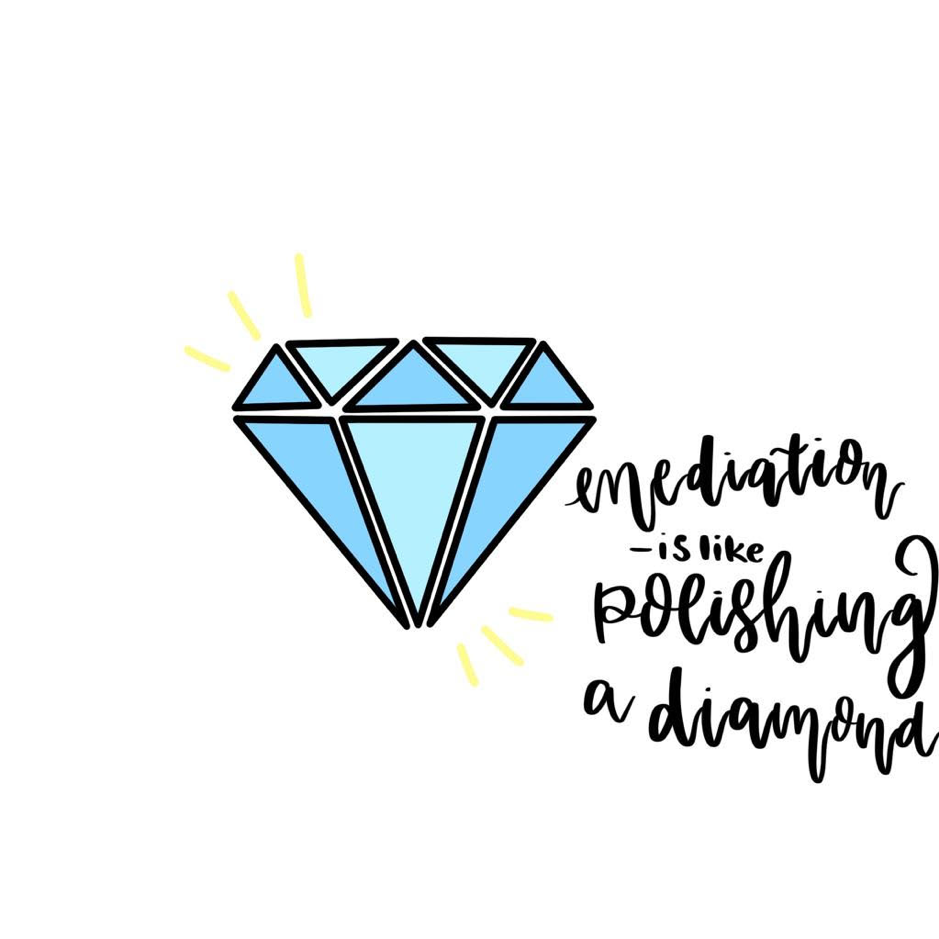
The diamond signifies the relationship between the two parties that have many problems. The unpolished diamond it was before signifies the misunderstandings and conflicts between the parties. These make the relationship sour and ugly. However, when polished or through mediation, the unpolished diamond or unhappy relationship becomes better. Even though mediation does not always solve the problems, the end product is always better than before the polishing process. Ultimately, mediation is a process. It may be a painful process, with having to open up about the ugly truths and be honest and slightly uncomfortable. But in the end, the outcome is satisfying and priceless. Moreover, the diamond is more reflective after the whole polishing process, signifying that the relationship is more open to new ideas and that there are fewer bumps (literally) in the relationship. Hence, mediation is like the process of polishing a diamond
12. Mediation is like Balancing a Beam
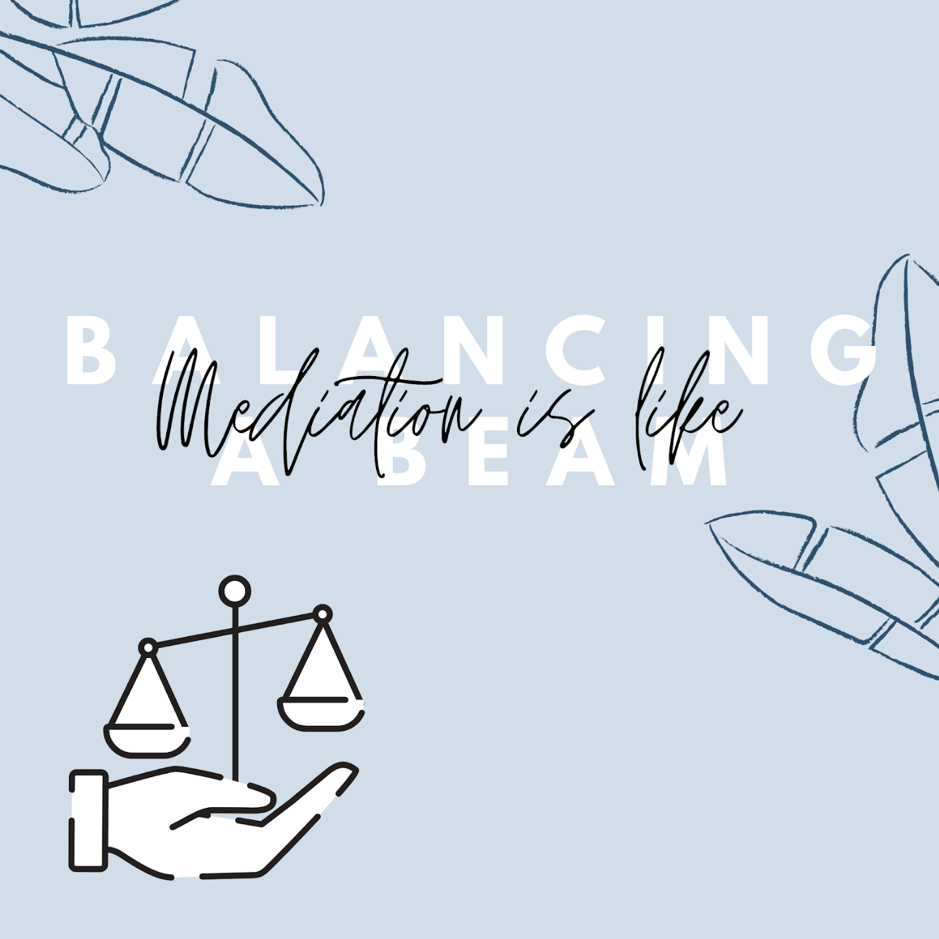
Striking a balance between all parties is a key facet of mediation. There are three main people in mediation, two parties, and one mediator. With each party standing on one side with varying (literal) positions and interests of different “weights”, it is inevitable that the beam balance teeters and tilts to one side – signifying an unstable relationship between the two. At this moment, the mediator has to be in the middle to remain impartial and neutral. If he ever moves to either side, the beam balance collapses. But with his prowess in mediation, he has the capability to draw both of the parties to the middle to reconcile their differences. With this, the beam balance achieves a balance and the conflict is resolved.
13. Mediation is Water
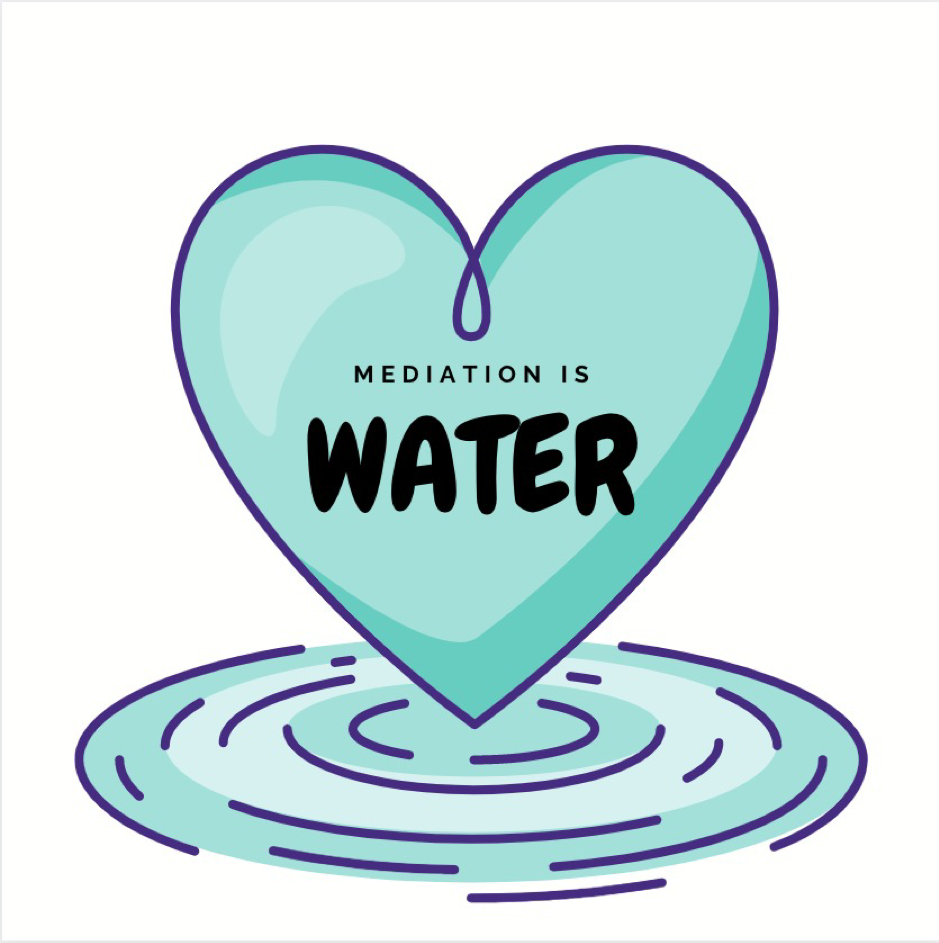
Mediation is water. Water molecules are highly cohesive and it shows how mediation brings people together. Water is also pH 7, a neutral ph, so mediation is a neutral part that is unbiased, helping two parties resolve the conflict. Also, water is calming, which shows that mediation should be a calm and slow process. Water is also known to be a universal solvent in our bodies, showing how mediation’s aim is to dissolve any conflict. Water is also a cooling element that extinguished the fire between two conflicting sides. Mediation is water.
14. Mediation is a Lightbulb
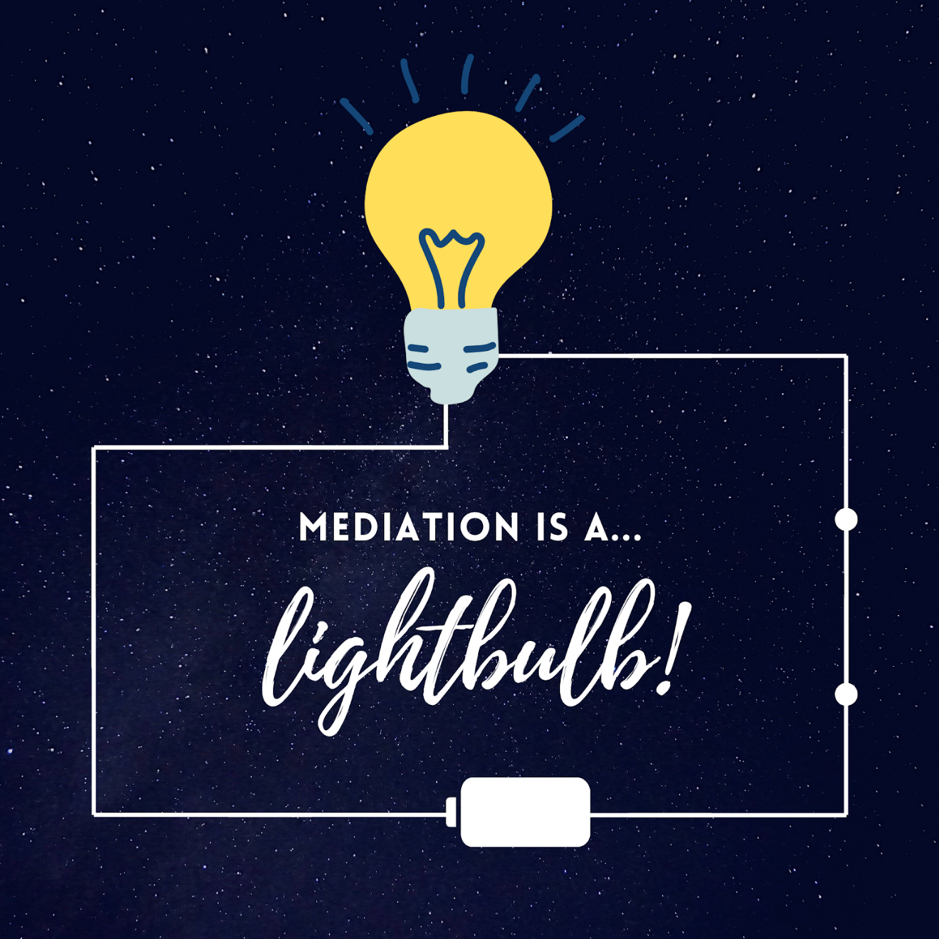
A light bulb, an essential part of our everyday lives, connects the circuit and allows the circuit to work. This is similar to how a mediator connects two or more parties, enabling the mediation to run smoothly. A light bulb can be used to guide us in the dark to allow us to arrive at our final destination with ease, which is similar to how a mediator guides the parties to reach a settlement which they can all agree on. A lightbulb also represents a “eureka!” moment, or realisation, just like how mediation helps parties understand each other and realise their similarities and differences, and help parties take a step closer to talking their problems out properly in future.
The four-step process of mediation is akin to how a circuit functions:
OPENING – Turning on the switch of the electrical circuit
INFORMATION GATHERING AND CHECKING – Electric current runs through the wires of the circuit
PROBLEM SOLVING – The light bulb is lit up, and we can use the light emitted to navigate our way through the dark
CLOSING – We have successfully found our way!
15. Mediation is the Rose from Beauty and the Beast
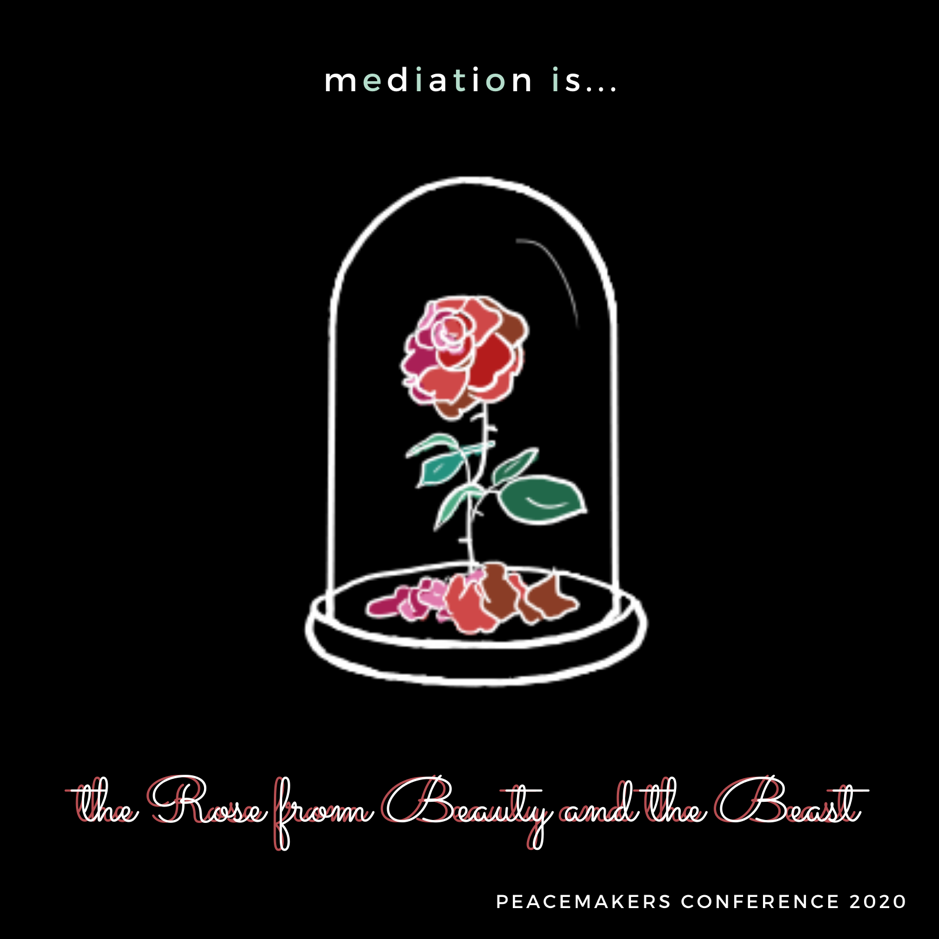
The rose has thorns, which symbolises the initial argument and the negative emotions between the two parties. The mediator has to treat the issue sensitively, so as to not induce hurt from the thorns. However, over the course of the mediation, the rose starts to become more beautiful, indicating the “bright” possible outcome of the issue. Just like how the rose brought together Beauty and the Beast, mediation brings together two parties through mutual understanding and building trust. There is also a common end goal to not let all the petals fall. Similarly, if the mediation is not done, the dispute will continue to increase in severity (i.e. the petals keep falling until the beast can no longer turn back into a human). Lastly, the rose is kept in a glass case, just like how whatever is said during the mediation session will stay confidential and within the group.
16. Mediation is like Boba
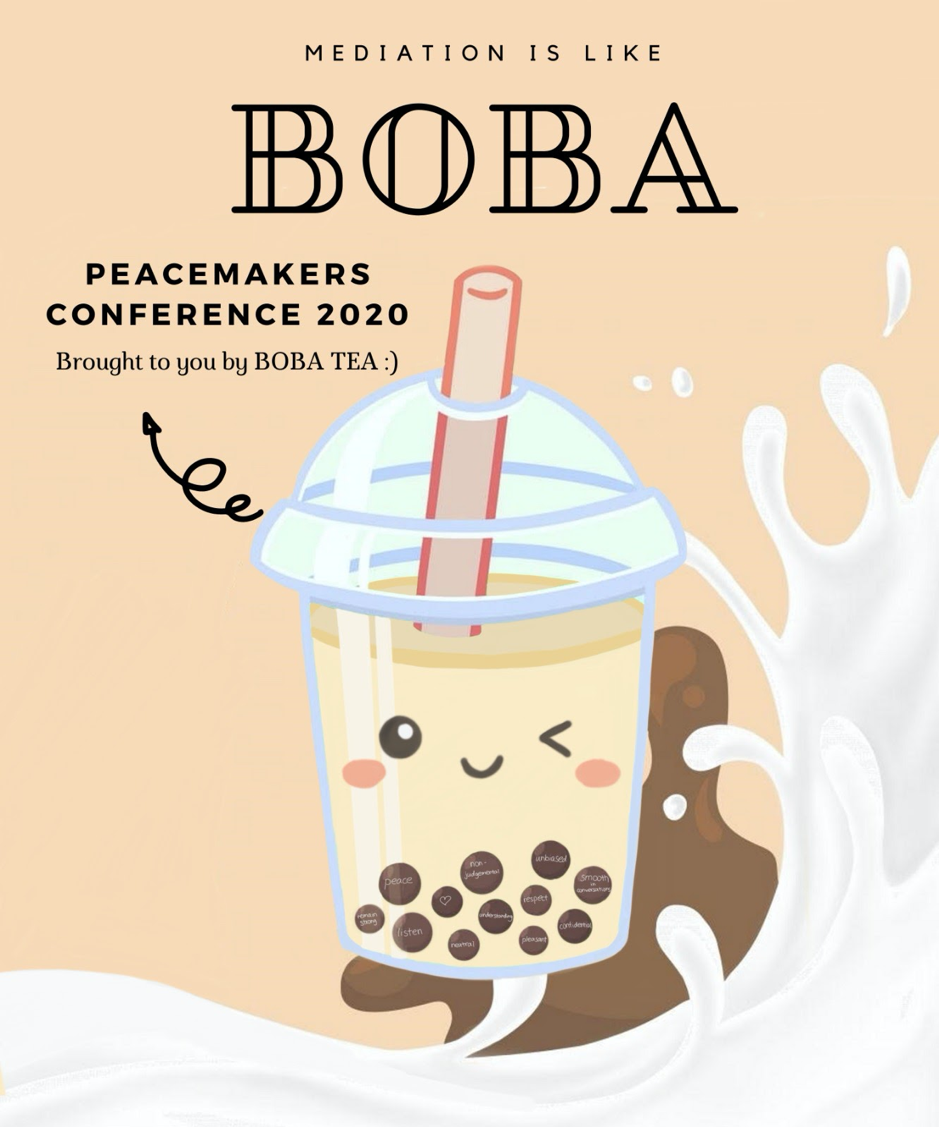
Just like boba in bubble tea, the mediator is an additional element during a discussion between parties and is not necessarily present for all conflicts. However, when conflicts occur, it is ultimately the presence of a mediator that grants peace to the discussion, allowing it to come to an amicable conclusion. Like how boba sweetens milk tea, a mediator sweetens a friendship and makes it pleasant for both parties.
Just like a boba in the sea of milk tea, a mediator may be surrounded or even flooded by all the tensions arising from the two parties, whether it be unpleasant emotions or incessant accusations. However, like boba, the mediator must remain strong and cannot crack under pressure, maintaining a game face throughout the discussion. Moreover, just as how boba has an inner view of the milk tea from within, (literally) beneath the surface, a mediator should seek to achieve a deeper understanding of both parties and the underlying Interests beneath their Positions.
While boba is a delicious bubble tea topping, it does not change the essence of the milk tea; likewise, a mediator should not change the essence of the parties’ words when reframing the situation, and neither should they be evaluative and add their own biases to the discussion. In addition to that, boba does not tend to one side of the cup. Instead, they are spread equally throughout the entire drink, giving the taster an equal chance to savour the boba. Likewise, a mediator should remain neutral throughout the discussion and not lean towards either party, being careful not to display any signs of bias in his/her body language or speech. Furthermore, a boba is always spherical and all-rounded, signifying neutrality. Likewise, a mediator should always be sure to put on an appearance of neutrality, regardless of his/ her personal inner judgements, if any.
Like the boba’s smooth texture, a mediator should always be SMOOTH in conversations, taking note of delivery such as pace and volume. Besides that, boba is very chewy and cannot be swallowed immediately. Likewise, it is impossible to reach a compromise right from the beginning, and everyone needs to take the time to digest one another’s’ perspectives in order to reach a satisfying conclusion.
Overall, just as how adding boba to your milk tea is supplementary, a mediator is an extra accessory when it comes to managing conflicts just like when you add boba to your milk tea. However, just like boba, a mediator makes conflicts easier to manage and a nicer process than if you were to just get the milk tea without boba. Without boba, one can still drink the bubble tea, but it might feel like something is missing. Likewise, without the presence of a mediator, two parties may still be able to resolve a conflict, but it may leave a bad aftertaste.
________________________
To make sure you do not miss out on regular updates from the Kluwer Mediation Blog, please subscribe here.



Impressive! Thanks for sharing this.